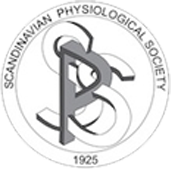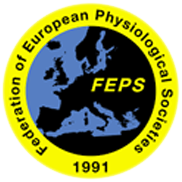Abstract submission is closed.
You are strongly advised to read the following before submitting your abstract.
Abstracts can be presented in two ways:
•Oral Communication Presented from a lectern with a set of slides.
To last no longer than 10 minutes, plus five for questions. If you wish to be considered to give an oral communication, please check the appropriate box when submitting your abstract.
The final list will be selected by the Scientific Programme Committee from the general communications.
•Poster Communication Presented from a poster located in the central hub of the meeting.
Presenters will be expected to accompany their poster for the full session on the day their poster is scheduled.
Abstract submission information
- Character allowance
- Vetting of abstracts for presentation
- What is an abstract?
- Components of an abstract
- The writing process
- Ethical requirements
- Example abstract
- Specific details required for experiments involving animals, animal tissues, humans or human tissues
- What makes good tables, figures and references?
The character allowance for a Communication is 3000 characters; for a Symposium or Demonstration abstract it is 5000 characters. Character count consists of the title and main body text (including tables). References and author names and addresses do not contribute to the character count. There is no reduction in character allowance for figures, but for each three rows of a table, deduct 150 characters. Each special character, space or punctuation mark counts as one character. Any corrections made to an abstract that involve additional text will also be deducted from your character allowance.
Vetting of abstracts for presentation
Before abstracts are included in the Programme, they are reviewed by ethical scrutineers. Abstracts will either be "Accepted as submitted", or "Rejected outright". Click here for a summary of the ethical requirements. It will save time if you note what will be looked for in this process and ensure that your abstract complies with all the submission instructions (details can be found on the submission site). Please note that the reviewer may ask for justification for certain techniques used in animal experiments; abstracts will be rejected if any doubts about the humanity of the experiments are not resolved.
An abstract is a short summary of your experiment/research. It is a highly structured writing exercise. Like a paper it should contain an introduction, methods, results and conclusions (although these actual headings are not required). Abstracts usually have a proscribed length (3000 characters). This makes them deceptively difficult to write, because they need to convey a lot of information in a very small space. If done well, it makes the reader want to learn more about your research. A sample of a well written abstract that incorporates all the key components and meets all the criteria can be found here.
These are the basic components of an abstract in any discipline:
- Motivation/problem statement: What are you studying? Why do we care about the problem? What practical, scientific gap is your research filling?
- Methods/procedure/approach: What did you actually do to get your results? For abstracts submitted to Society meetings, there is no requirement to include full experimental protocols. However, sufficient information must be given within the text, or by reference to published work, to indicate how the experiments were performed. In addition, please note the specific details required by the Society on experiments with animals, animal tissues, humans or human tissues.
- Results: As a result of completing the above procedure, what did you learn? Society abstracts must include data and this will be the main component of the abstract. Authors must include within the abstract a clear description of the results and all the appropriate data to support any conclusion they wish to make; an abstract without supporting data will be rejected. If numerical data are presented as mean values, the standard deviations or standard errors should be given; the form used, and the n values must be stated. When statistical significance is shown, the statistical test must be named. For non-numerical data (e.g. Western blots) the number of replicates is required. Data may be conveyed by a combination of Methods and Results ie an outline of the technique used to obtain the data followed by the data obtained. Specific details about procedure and results are omitted unless they are very important. At the meeting, authors are expected to present within their Communication all the data described in the abstract.
- Conclusion/implications: What are the larger implications of your findings, especially for the problem/gap identified in step 1?
Many abstracts will also feature tables, figures, abbreviations and references.
For helpful hints and specific guidelines see below.
It helps, as you write your abstract, to write it methodically, section by section, to make sure that it is complete. At this stage, don't worry too much about any length requirements for the abstract. After the first draft of the abstract is written, check to see if it fits within any length restrictions you have been given. If it is too long (which is usually the case at this stage of writing), look it over to see where it could be made more concise. For each word or phrase, ask yourself "Is this really necessary? Is there a simpler way I can convey the same meaning?" Don't use three words where you can communicate the same idea in one. Remove redundancies and unnecessary details, and substitute concise phrases for wordy passages. Keep editing your abstract until it falls within the length guidelines you have been given. Have someone else look over your abstract before you are done. Ask a colleague or supervisor to read the abstract and offer criticism. They can often help pinpoint text that is confusing, wordy or redundant. Finally, make sure to spell check and proofread carefully. A sloppy abstract leaves the reader with the impression that your research might also be sloppy!
- For work conducted in the UK, all procedures accorded with current UK legislation.
- For work conducted elsewhere, all procedures accorded with current national legislation/guidelines or, in their absence, with current local guidelines.
- Experiments on humans or human tissue
Authors must tick the appropriate box to confirm that: All procedures accorded with the ethical standards of the relevant national, institutional or other body responsible for human research and experimentation, and with the principles of the World Medical Association's Declaration of Helsinki.
Similar cardiovascular autonomic changes during the development of renovascular and angiotensin II (ANGII) induced hypertension in rats
M. A. Toward1, E. B. Oliveira-Sales1,2, R. R. Campos2, S. Kasparov1, J. F. Paton1
1. Physiology and Pharmacology, Bristol Heart Institute, University of Bristol, Bristol, United Kingdom. 2. Fisiologia Cardiovascular UNIFESP, Escola Paulista de Medicina Rua Botucatu, Sao Paulo, Brazil.
University College Dublin (2009) Proc Physiol Soc 15, C51
Hypertension remains a serious clinical problem. Numerous rodent models of hypertension have been developed to allow studies into possible causative mechanisms. Two such models are the chronic ANGII infusion and renovascular hypoperfusion (two kidney one clip; 2K1C). Although both models depend on activation of ANGII type 1 receptors, it is not known when and if the autonomic nervous system is engaged in the development and/or maintenance of the resultant hypertension. The development of hypertension in both models was documented using 24 hour radio-telemetry recording of arterial pressure (AP) and heart rate (HR) in conscious freely moving rats. Hey Presto software (Waki et al, 2006) was used to calculate spontaneous baroreflex gain (sBRG) and indices of autonomic function from the AP and HR variabilities by spectral analysis. ANGII model: Rats (male, 250-350g, n=12) were anaesthetised with a mixture of ketamine (60mg kg-1) and medetomidine (250μg kg-1, both i.m.) and radio-transmitters installed. Continuous recordings of AP and HR were made for 3 days prior to, and 10 days during, osmotic minipump driven infusion of ANGII (800ng/kg/min, s.c.). 2K1C model: Rats (male, 150-180g) were anaesthetised as above and radio-transmitters installed plus the left renal artery was partially obstructed with a silver clip of 0.2 mm width (n=6) or sham surgery (n=6). Recordings of AP and HR were made for 6 weeks. Values are means ± S.E.M., compared by ANOVA. Both models exhibited similar alterations in autonomic indices especially when the hypertension plateaued. For both the 2K1C and the ANGII group AP rose to similar levels (e.g. 185±15 mmHg vs. 103±10 for sham rats and 150±3 vs. 91±3 mmHg pre-infusion, p<0.05 respectively). Additionally, HR was elevated (ANGII: 409±10 vs. 368±5 bpm pre-infusion, p<0.05; 2K1C: 468±11 vs. 382±11 sham treated, p<0.05), very low frequency of systolic blood pressure increased (ANGII: 6.8±0.5 vs. 5.4±0.2 mmHg2 pre-infusion, p<0.05; 2K1C: 7.0±0.3 vs. 3.9±0.3 mmHg2 sham treated, p<0.05), high frequency of the pulse interval was reduced (ANGII: 10.6±1.5 vs. 15.0±1.1 ms2 pre-infusion, p<0.05; 2K1C: 9.6±0.5 vs. 16.7±0.9 ms2 sham, p<0.05) and sBRG was reduced (ANGII: -1.1±0.3 vs. -2.0±0.1 bpm/mmHg pre-infusion, p<0.05; 2K1C: -0.83±0.05 vs. -2.5±0.17 bpm/mmHg , sham, p<0.05). Thus, these established models of experimental hypertension are associated with failure of the parasympathetic component of the baroreflex and increased sympathetic vasomotor activity. These data suggest that chronically increased peripheral levels of ANGII, resulting from exogenous infusion or renal hypoperfusion, may cause hypertension via mechanisms involving central modulation of both cardiovascular autonomic activity and baroreflex function.
Specific details required for experiments involving animals, animal tissues, humans or human tissues
• For experiments on animals and animal tissues
- abstracts must state the type of animal used (common name or genus) either in the title or text;
- abstracts must include the name, dose and route of administration of anaesthetics used in all the experimental procedures including preparative surgery (e.g. ovariectomy, decerebration);
- for experiments involving a neuromuscular blocker, abstracts must include its name and dose, plus the methods used to monitor the adequacy of anaesthesia during blockade (or refer to a paper with these details);
- when scientifically relevant, but not otherwise, the method of killing.
- Note: In experiments where genes are expressed in Xenopus oocytes, details of oocyte collection are not required.
• For experiments on humans or human tissue
- All abstracts must specify, in the title or text, that the work has been done on humans or human tissue.
- Use of non-proprietary drugs or chemicals
- References to non-proprietary drugs should include a brief description of their effects, and also a reference.
What makes good tables, figures and references?
Tables
The good features of a table are:
- it is numbered;
- the legend explains key details of the experiment;
- error terms such as standard deviation are clearly stated
- it explains the meaning of unusual abbreviations.
- Tables should provide enough information on what statistical test and significance level were used.
Figures
The good features of a figure are:
- •it has clearly labelled axes;
- •informative legends;
- •it has simple symbols/colour codes that can be readily distinguished for different treatment groups;
- •its font sizes and line thicknesses are sufficiently large/bold to read;
- •it is self-contained.
All abbreviations must be explained within the text, except those accepted in the field (see The Journal of Physiology Abbreviations List [PDF]). New abbreviations should be avoided whenever possible. Authors are reminded that a large number of abbreviations within an abstract can detract from the sense.
References
Authors may use either the Harvard (e.g. Smith et al. (2004) within the text, and alphabetically within the reference section), or the Vancouver (numbering from (1) to (5) within the text and in order of citation within reference section) system of citation.



